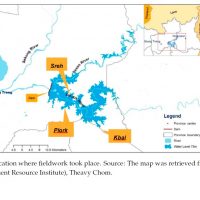 Studying Narratives in Politics
Studying Narratives in Politics
Increasingly stories and narratives are accepted as an important subject of study in politics. Stories bring together facts, emotions, fantasies and hopes. Stories are best to stitch together different ways of knowing, from abstract science to beliefs to practical knowledge from doing things. And stories speak to our imagination; some would even argue that we cannot think beyond stories — a phenomenon Nassim Taleb called “narrativity fallacy” in his best-selling book “Black Swan”. This is basically an idea that we have to connect facts into a story that has cause-effect relationships in it. See for example the famouse Heider and Simmel experiment from social psychology.
But for Master and Ph.D. students studying narratives in politics it is not all that easy. How to approach stories in a “scientific” way? What elements of narratives to study? How to make sense of them and how to claim more general implications of narratives to other populations or settings? Because the term “narrative” embraces so much and because there are so many various ways of studying these — there may be much confusion among those interested in narrative policy analysis.
New Paper: Typology of Narratives
Together with a colleague from the National University of Singapore, Dr. Ching Leong, we have published a paper in the journal Water that may help scholars of narratives to structure their analysis. The paper is titled “Global IWRM Ideas and Local Context: Studying Narratives in Rural Cambodia” and it is available for free online. In this paper as offer a typology of 4 narrative types that may be useful for researchers to look into perceptions and ideas of public about any governance interventions in their areas. The Table below explains these 4 types with examples of quotes from our research site — a few villages in the Lower Mekong river basin in Cambodia where a proposed (and under construction) dam Sesan 2 will result in eviction of thousands of villagers from their anchestral lands.
We thus propose that there are 4 types of narratives: myths, stories, noise and informed opinion. These four types may be plotted on the 2 to 2 matrix along two dimensions. One is what we call “ideational force” and another is “degree of social meaning”. In other words, on one axis we have the extent to which a narrative is shared across various members of a community, and on the other axis we have the extent to which a story is consistent and persuasive in being told and re-told. This gives us the four types as follows:
1) Noise is what we call fragmented narratives, uncertain in factual origin and not embedded in any social norm or view. They are often transient and uncertain in origin and emotional in content. Narratives here are often not fully formed.
2) Myths are powerful, but they may lack full grounding in fact and consistency in (re)-telling. They tend to appear in situations when information is scarce, and no clear communication is provided.
3) Informed opinions have a stronger footing in fact. However, there is little sense of a shared understanding, or of looking at interests in a collective manner.
4) Stories. Unlike myths and noise, stories are high in cognition and social meaning, and have a strong outward-looking, other-regarding component, rooted as well in different empirical facts which are more established than the case with the myths
Research Context: Villages Affected by Sesan 2 Dam, Cambodia
We describe how all four types are present in our case study, the Sesan 2 Dam on the Lower Mekong River in Cambodia. The map indicates the sites that we studied. Our research site is along the Sesan River which flows through Central Vietnam and northeast Cambodia, in the province of Stueng Treng. In November 2012, a 400-megawatt dam, the Lower Sesan 2 (LS2) dam project, was started with an investment of US $816 million. The company is formed with a majority stake from China’s Hydrolancang International Energy and Cambodia’s Royal Group. Most of the electricity will be sold to state energy provider Electricite Du Cambodge (EDC) or exported to Vietnam under a 40-year contract [73]. A 2012 study [74] by US and Cambodian researchers estimated that the dam, once constructed,
will deplete fish biomass (due to fish migration blockage) in both Sesan and Sreypok, by more than 9%. Experts have also warned that the LS2 dam might significantly change the hydrology of Mekong River and Cambodia’s Tonle Sap Lake, while diminishing sediment flows to the Mekong Delta.
Implications of Research
Against the dominant literature on anti-dam movements and protests, we demonstrate that narrative types are more diverse than just pro- or against-dams, and that there is much confusion among farmers on how to act or what to expect. Environmenal NGOs that may seek to represent these villagers, thus, would need to work on creating one major discourse so that it may claim that it represents all villagers. What such discursive work may entail is an interesting research question for future studies. Furthermore, we also do not know how to move narratives from one box to another, and what factors may be important here. We cam imagine how village leadership may cultivate the strong “story” of anti-dam protests. We may also imagine the acversarial scenario when the industry building the dam or the central government may diffuse stronger narratives into “noise” by creating confusion among villagers and thus preventing them from political and judicial mobilisation. More empirical work based on this typology and the dynamism of the types in it may prove fruitful.